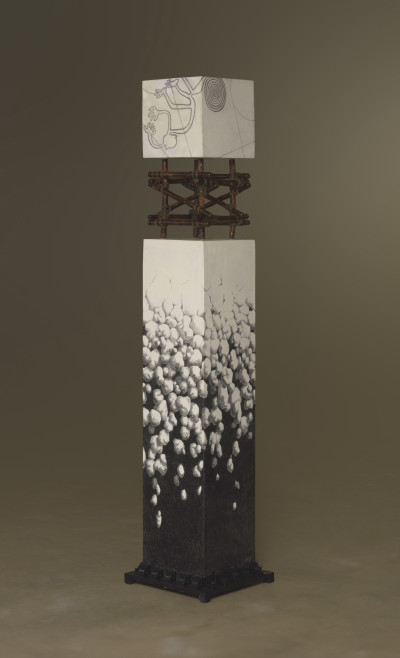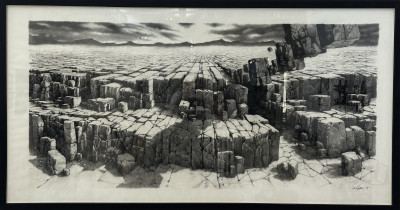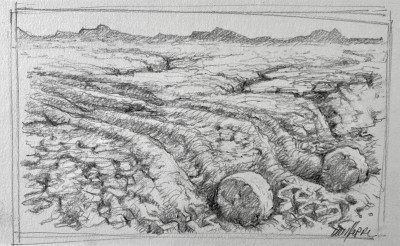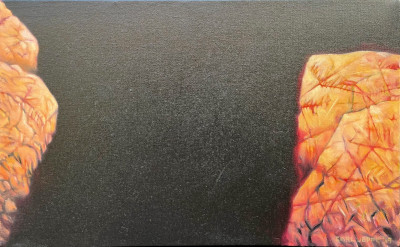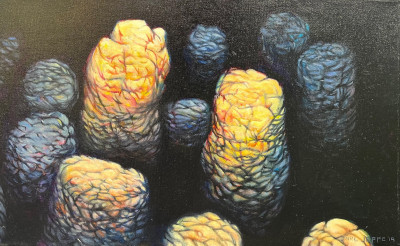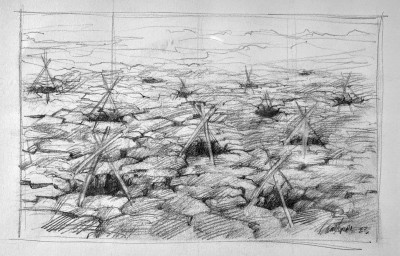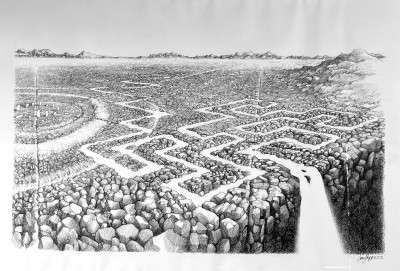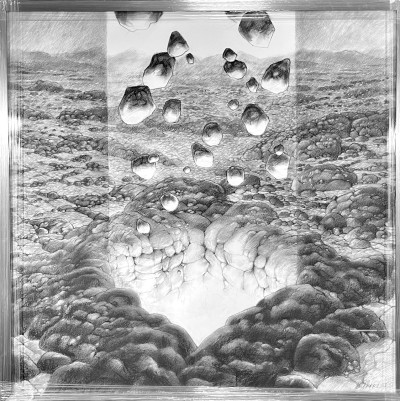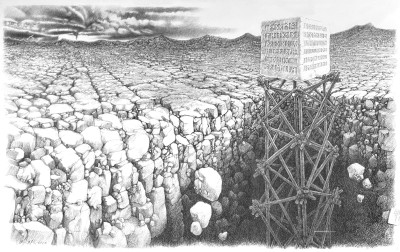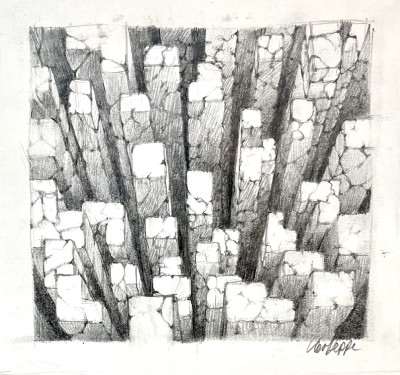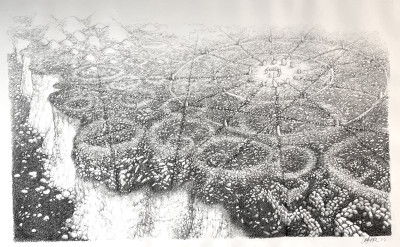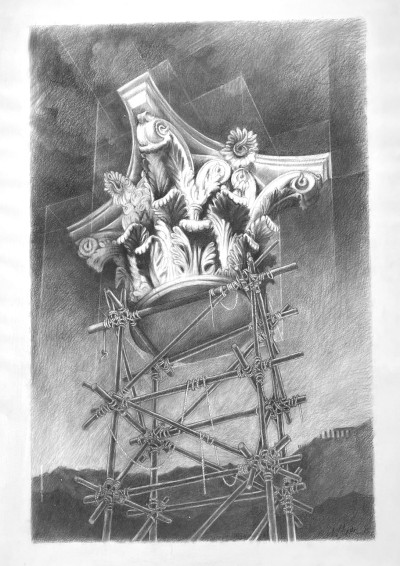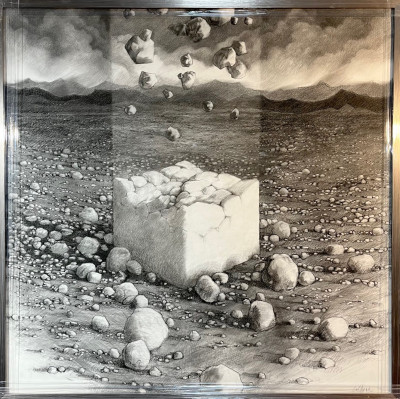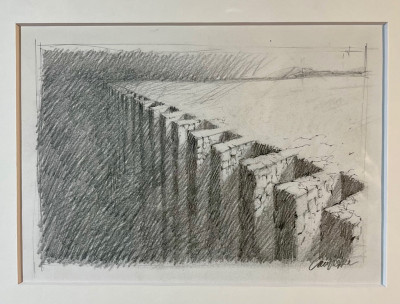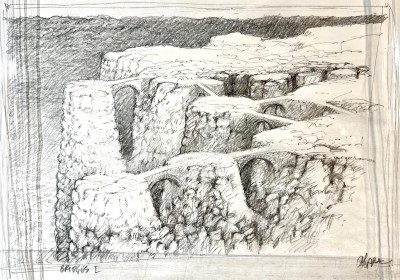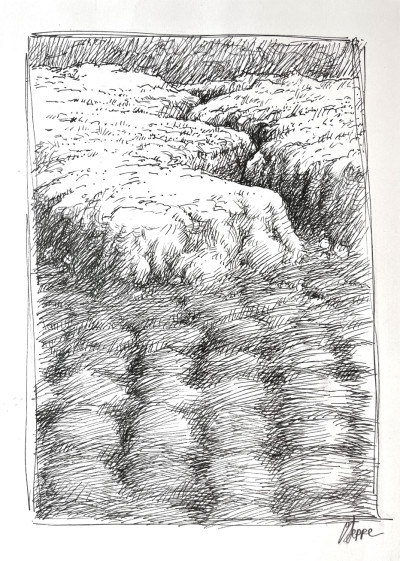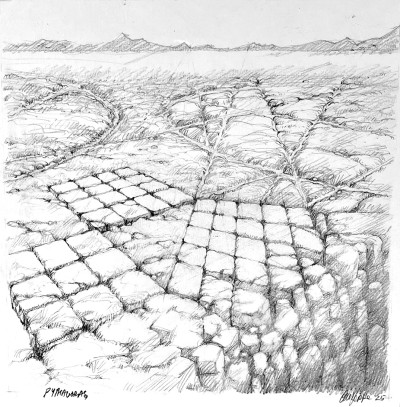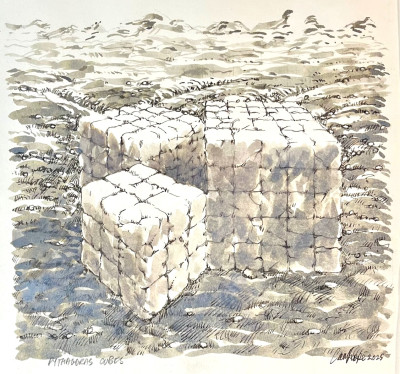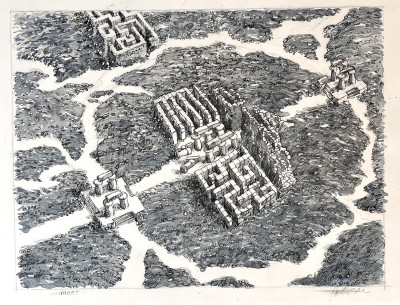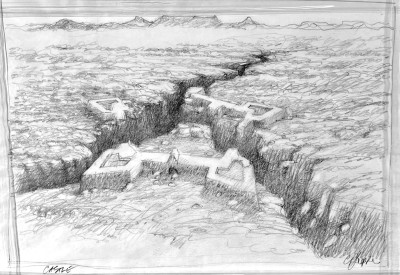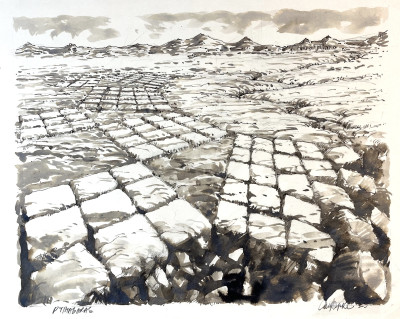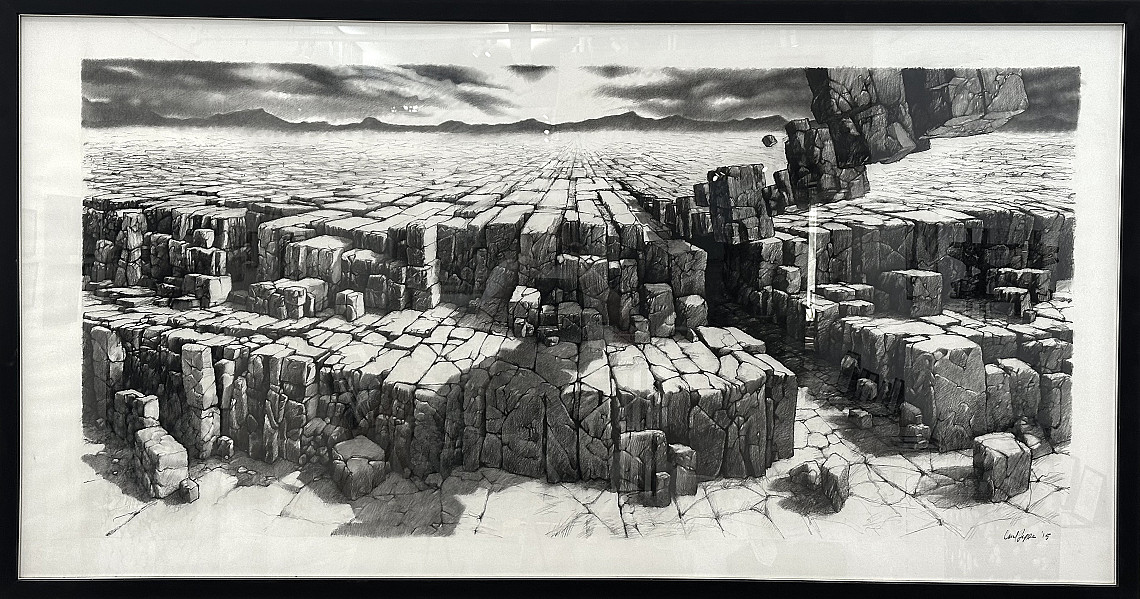
October 25, 2025 - November 16, 2025
White River, South Africa
Click here to view: Carl Jeppe's Exhibition Catalogue
ROCKS AND HARD PLACES
A solo exhibition by Carl Jeppe
"While strolling along, anywhere, it could be along the pavement in my suburb, or the high street in Windsor, or the parapet of a Moorish castle in Portugal, or on the hiking trail up Lion’s Head, I have always been fascinated by the scars and scuff marks and remnants that humans, and nature, have left behind on the earth’s surface.
Those scars could take the form of the ruts in a Roman road, (the road itself a remnant of abygone civilization) or the piers of an old bridge that has been replaced by a shiny new one. In my suburb 70 years ago, most properties had waist-high wire boundaries with sturdy steel pipes to which was attached a curly wrought-iron gate and a diamond-mesh fence. These flimsy structures have long since been supplanted by high walls crowned with high-voltage electric wires. However, one can occasionally see a sturdy old steel pipe sticking incongruously out of a garden bed, a reminder of the old fence that used to be.
As an art student, I was mesmerised by the “Land art” works of Richard Long, who purposefully left his own scars and remnants on landscapes carefully selected for their remoteness. I felt the same attraction for Robert Smithson, whose “Spiral Jetty” was an iconic work of land art. So was “Double Negative” by Michael Heizer. Time has taken its toll on all these pieces of great art, just as it has on our great civilizations.
History books can tell us what became of the ancient Greeks, the Romans, the Phoenicians, the Huns, the Goths, the Vikings, the Ming Dynasty, the Aztec, and the Incas, to name but a few. But those magnificent cultures are today represented by a few cracked statues, desiccated mummies, and mysterious temples repurposed into tourist attractions. Archaeology and Anthropology and Palaeontology are burgeoning sciences. Developing technology like ground- penetrating radar, lidar and computer tomography is making exploration of historical sites and artifacts increasingly accessible. The History Channel is full of stories of new discoveries of Viking treasure buried under ploughed fields, and Roman villas discovered in the English countryside. Indeed, not long ago, the skeletal remains of Richard the third, king of England, were dug up in a parking lot in the city of Leicester. We humans seem to have an insatiable desire to discover where we came from. Religions, on the other hand, seem to be obsessed with where we’re going.
We seem to find ourselves, almost on a daily basis between a rock and a hard place in this increasingly alien, Ai driven, modern “civilization” (and I use that word with my tongue thrust firmly in my cheek)
We are constantly urged to make decisions about who is right and who is wrong... Republicans or Democrats; Who are the victims and who are the aggressors; a two-state solution or annihilation. ANC or GNU? Who do we trust to have their finger on the trigger? Fake news or Mainstream? Coal or Nuclear or wind or solar? How do WE change things for the better? One thing is for sure: change is inevitable, and not all changes are for the better. Some changes are cataclysmic, and are the fault of no-one, such as the one in which an asteroid strike on the Yucatan Peninsula killed off the dinosaurs 66,000,000 years ago. More recently, the ongoing industrial revolution is responsible for what we now call “Climate change,” and we know not what our planet will look like a hundred years from now. Even though science has made spectacular advances, no one can tell us with any real certainty what is around the next corner. We can try to guess, and we can do our clever computer modelling, but just when time will run out for us, or this earth, no one really knows.
I’m convinced that one of the primary reasons that we don’t know is because we are human. One thing we can be absolutely sure of is that humans simply refuse to get along with one another, let alone get together for long enough to plan what’s to become of our planet. We area quarter way through the 21st Century and still humankind is collectively so stupid that we can’t learn from history that, in war, there are no winners. And if we’re not ourselves at war, we’re taking sides. As Astronomy Professor Carl Sagan puts it in his famous “Pale Blue Dot” speech at Cornell University in 1994: “Our planet is a lonely speck in the great enveloping cosmic darkness.........think of the endless cruelties visited by the inhabitants of one part of the dot on the scarcely distinguishable inhabitants of another part of the dot. How fervent their hatreds, how frequent their misunderstandings, how eager they are to kill one another.”
My work is informed by the above, (and a whole lot more besides) and it includes, mostly from my imagination, depictions of the remnants of lost, abandoned, and conquered civilizations, and the scars and scuff marks that humans have built with pride and hubris upon the earth, only for them to fall into decay. It includes imaginary structures and shelters, temples, mazes, and labyrinths. My vantage point is high enough to be oblivious to the boundaries, barriers, and borders, which are the normal causes of animosity, but low enough to observe the resulting destruction. I use the symbol of the labyrinth to characterize the way humankind might ponder the present, and the maze so that we might stop and think about which way to go in the future. In modern culture, we often use the terms “Labyrinth” and “Maze” interchangeably, but labyrinths are distinct from mazes in a key way: labyrinths are contemplative and lead you to a centre, and are designed to increase wisdom and discernment, creating a focus by blocking out distractions, while mazes are constructed to be confusing, leading you toward unforeseen dead ends and barriers. As Lauren Artress says in The Sacred Path Companion: “A maze is designed to make you lose your way, while a labyrinth is designed to help you find your way.”
I use the symbolism and imagery of both the maze and the Labyrinth to suggest that the lives we live and, as humans, have always lived since the dawn of mankind, are complex. We need to make thousands of decisions daily, and each of those decisions leads to a consequence. Whether it’s something as simple as pressing the “send” button on your smartphone, or saying “Yes” to a proposal of marriage. Both of those decisions can change someone’s life forever. The work that you see in this space is about those consequences. They are reflections of the situations we as a species might find ourselves in if we do not deal more kindly with one another, and with our planet: “the only home we’ve ever known.” As Carl Sagan says. We seem to be surrounded by individuals and groups who are vehemently, sometimes violently at odds with their neighbours, and careless with the environment. Why is it that we humans seem to thrive in the presence of influencers, narcissists, and bullies? Why is it that they are the ones who can drum up the most enthusiastic support? What’s wrong with us that we (the ones who think of themselves as not narcissists and bullies) – can just sit back and accept that we should be led into dark places where bad things happen?
Humans, both collectively and individually are capable of the most wonderful things; achievements of such incredible creativity, ingenuity, and beauty; things that are inconceivably difficult to do, and yet we do them. Humans have walked on the moon; flown a helicopter on Mars; humans have created symphonies and have written poetry and made art and built cathedrals and temples that we travel to the four corners of the earth to see and hear and be moved by. We do those things, and we take great pride and pleasure in them, and yet just over the next mountain range, or in the next village, someone is raping a toddler, and people are fighting each other over ideologies, or territory, or oil, or......who cares? ....... any excuse will do.
We can probably conclude that the human race is, and always will be, a thing of contrasts: of good and bad, of building, and destroying, conflict and peace, poverty and wealth, right and wrong, Yin, and Yang. We need the down side to make us feel better about feeling up. I am probably the world’s most irrepressible optimist, and yet, the drawings I make seem to be possessed by visions of barren, abandoned, desolate landscapes. I can only guess that while I’m dreaming up these images, the Yin and Yang bits of my psyche are hard at work, like chess players, each trying to get the better of the other. And I hope that my struggles bring you a time for quiet reflection between these rocks and hard places."
Opening words by Carl Jeppe
White River Gallery
25 October 2025

